
People often ask me how I find my stories. Most of my animal tales come from old newspaper articles followed by a lot of research. For this story set in Bath Beach, Brooklyn, there was also a large dose of coincidence.
While I was doing research for my last story about the mascot cat of P.S. 128 in Bensonhurst, I found some great vintage photos from the Bath Beach neighborhood of old New Utrecht that I put aside for future use. One of the photos was of the old Bath Beach Hotel (aka Bensonhurst Hotel or Hotel Bensonhurst), so I decided to do some research on this hotel. I found a very tiny news article about a fire and continued digging…
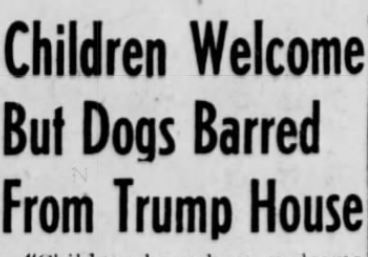
In the meantime, I’d been trying to find out if the Trump family had any pets while they were living in Queens. As luck would have it, on the very same day I started doing research on the Bath Beach Hotel, I typed in some keywords about Trump and dogs into my favorite newspaper archive website.
The result of this research is the following dog story of old Bath Beach, Brooklyn.
The Hero Dogs of Bath Beach
It was about 3:30 a.m. on March 26, 1920, when bicycle Patrolmen John S. Perfors and Raymond Mulvey of the Bath Beach Police Station were cruising along Cropsey Avenue. As they approached 20th Avenue, they heard some dogs barking madly.
The dogs—a collie named Kelly and a mutt named Buddy—were the pets of 44-year-old Charles Whan, a carpenter who was working as a caretaker for the Bensonhurst Hotel while it was closed for the season.
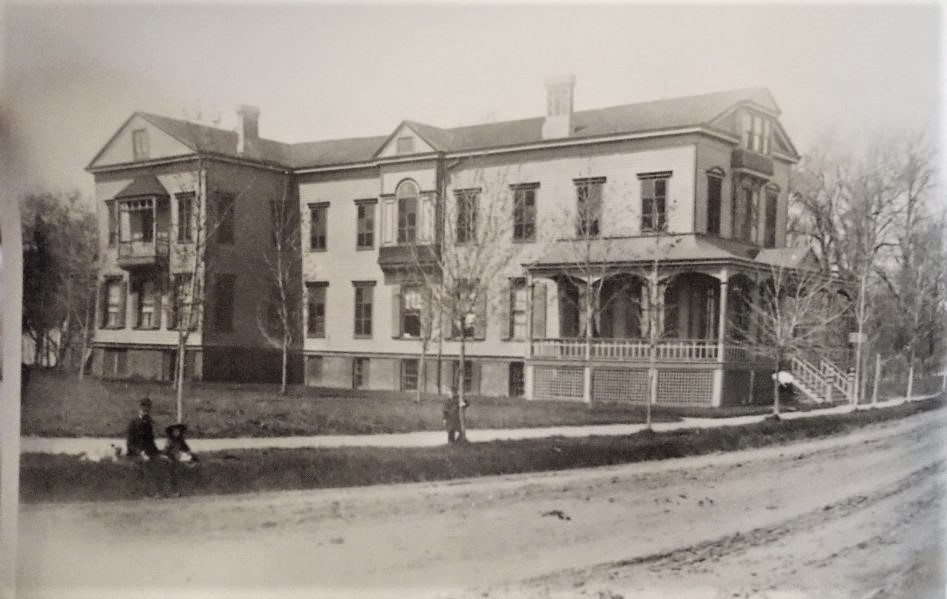
Although the hotel was not open, Charles’ wife, Victorine, their 16-year-old daughter, Helen, and her 15-year-old friend, Mabel Johnson, were also in the hotel at the time of the fire. They were apparently alerted by the barking dogs and able to escape safely (news accounts do not state whether the women were rescued or walked out on their own). By the time the first firefighters arrived, flames had spread to the roof of the building.
As a light breeze carried embers to the roofs of nearby buildings, two more alarms were sounded to bring additional fire apparatus to the scene. Under the direction of fire chiefs Langford, McKenna, and William Rogers, the blaze was brought under control in about three hours.
George Vogel, manager of the nearby Bensonhurst Yacht Club, served hot coffee and rolls to the firefighters. (Hopefully he gave some treats to the hero dogs also.)
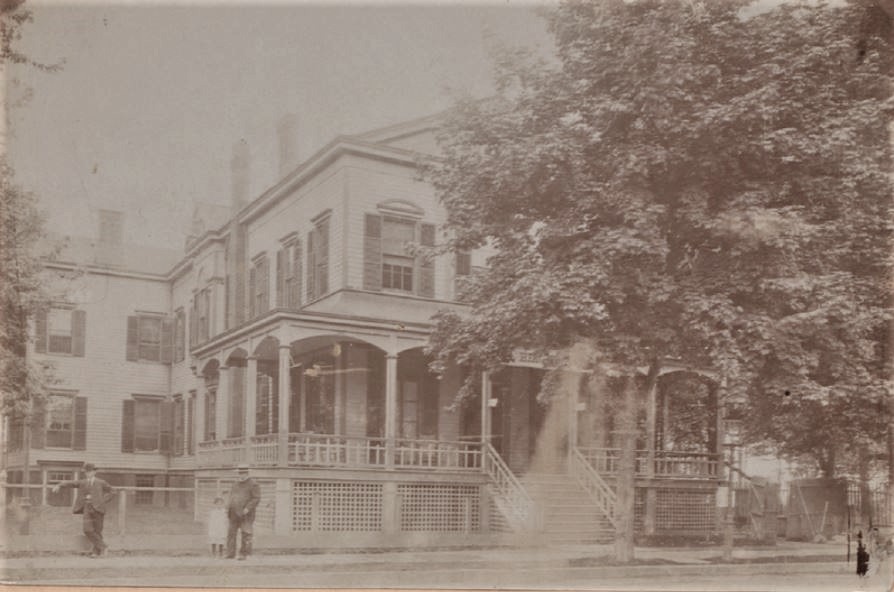
With $20,000 in damage, the building—then owned by the Seagold Improvement Company—was declared a complete loss.
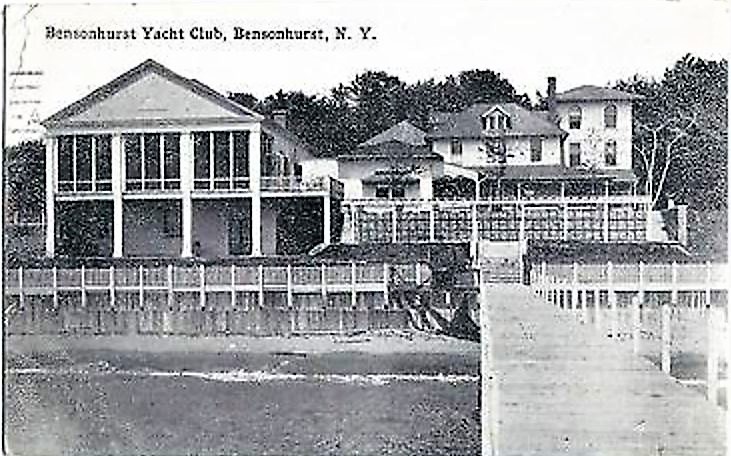
The Bath Beach Hotel — aka, Bensonhurst Hotel
The Bensonurst Hotel was located on a large tract of land fronting Cropsey Avenue between Bay 26th Street and 21st Avenue. During the time when this dog story takes place, the large strip of land along the waterfront had not yet been filled in (that would happen in the late 1930s when the Belt Highway was constructed), so the hotel was only about 200 feet from Gravesend Bay.
The hotel property was originally part of the large Egbert Benson farm (the Benson homestead was on the corner of Cropsey Avenue and Bay 22nd Street). By the 1880s, this specific parcel of waterfront land was owned by a bricklayer named Cornelius Furgueson, his wife, Cornelia, and their son Justice Cornelius Furgueson, Jr.
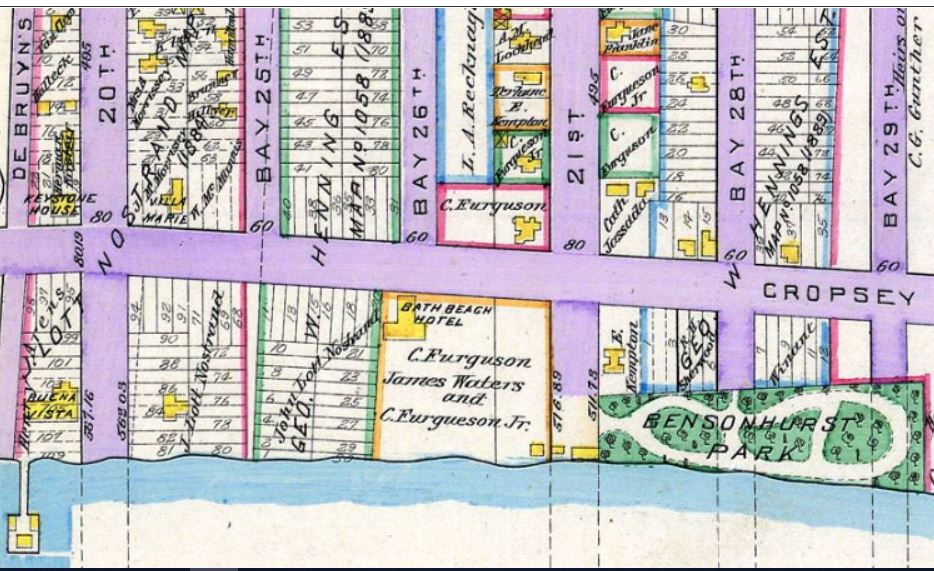
Cornelius and Cornelia Van Wicklen Furgueson lived in the large frame home—described as one of the area’s most handsome villas—located on the corner of Cropsey Avenue and 21st Avenue.
Sometime around 1884, several houses on adjacent property belonging to the George W. Hennings estate (now the site of Bensonhurst Park) were condemned by the town. A “responsible citizen” reportedly offered $2,500 for the houses. This man asked the New Utrecht Town Council, then headed by the aforementioned Cornelius Furgueson, to notify him when the sale was scheduled to take place.
Instead of notifying the potential buyer of the sale, Supervisor Furgueson reportedly held a back-room meeting that was attended by “an interested few,” in which the houses were sold to his brother-in-law, James Waters, for $500. The houses were removed to the Furgueson’s property and became known as the Bath Beach Hotel.
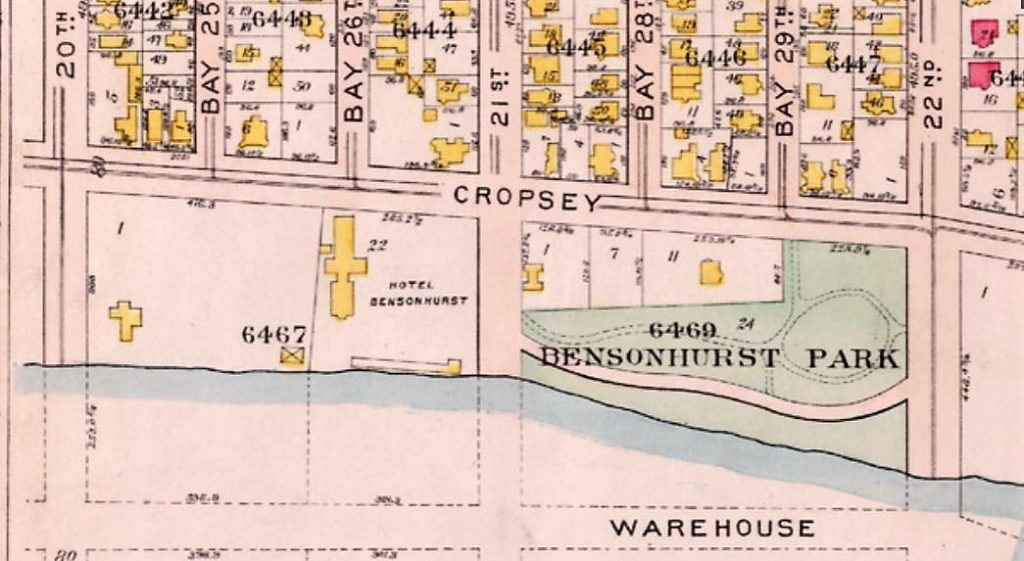
With the rapid development of Bensonhurst over the next few years (another story for another time), the inn was enlarged and renamed the Bensonhurst Hotel (or Hotel Bensonhurst). The hotel, which could accommodate 200 guests, boasted a beautiful lawn, plenty of shade trees, and tennis courts (despite its waterfront location and close proximity to the yacht club, tennis was the main attraction).
From Rags to Riches and Fraud: “Boss” Cornelius Furgueson
Born in Queens, New York, in about 1834, Cornelius Furgueson was the epitome of the American dream. As a young man, Furgueson learned the bricklayers’ trade in Manhattan, which is how he began to amass his fortune in real estate. In later, more prosperous years, Cornelius Furgueson was fond of saying, “I had nothing but a tin pail and my hands and feet.”
Furgueson was good with his hands, but he was also a shrewd man. Even though he was illiterate, he learned how to hustle and play the game. It didn’t take him long after moving to New Utrecht to attract a political following in the Democratic Party and get elected as town supervisor (aka, “the boss of New Utrecht”).
Furgueson held a lot of power in New Utrecht. In addition to his role as town supervisor, he also served as president of the Board of Health, president of the Town Board of Improvement, shore inspector, chairman of the Flagging Committee, chairman of the Sewer Committee, treasurer of the Inebriates’ Home, and chief of police. His son Cornelius Jr. was a prominent judge in Brooklyn, so he also had a good fixer in the family.
In 1890, the Kings County Grand Jury charged several men, including Furgueson and his son, with fraud in connection with the opening and grading of Cropsey Avenue near 18th Street. According to a report published in the Brooklyn Daily Eagle on February 28, 1890, the jury charged that “through their connivance the Town of New Utrecht was defrauded of more than three-fourths of the assessments levied upon the property.” In referring to the back-room real estate deal involving the Bath Beach Hotel, the jury’s report further stated that “gross frauds have been carried on from the very beginning of the work.”
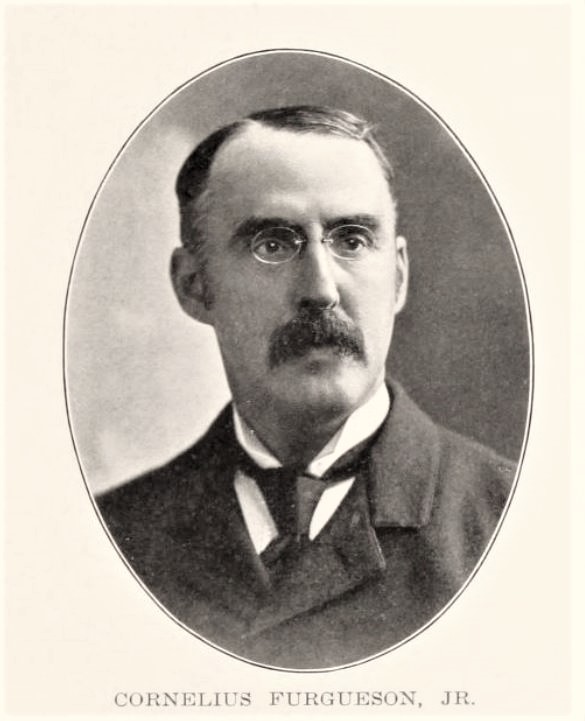
Unfortunately, the effected property owners involved in the real estate transactions did not take action within five years from the date on which the contracts were entered. Thus, “the court regretted that the statute of limitations had prevented their finding an indictment.”
This court hearing was not the first in which Furgeuson had narrowly escaped being indicted for malfeasance in office. But apparently Furgeuson was like the proverbial “Teflon Don”: None of the charges levied against him seemed to stick.
According to newspaper accounts, Furgueson would always deny all knowledge of the facts and deny the charges while refusing to allow anyone to examine his records. Even when he was accused of stealing funds intended for the Inebriates’ Home he remained in office without a challenge.

In 1894, a lawsuit against the Board of Improvement was filed in State Supreme Court to annul a street lamp contract with the Kings County Gas and Illuminating Company on account of fraud and collusion. (Furgueson was renown for introducing 4,000 street lamps throughout New Utrecht which each cost $28 a year–or $12 in taxes for each resident–to operate.)
I don’t know the outcome of the lawsuit, but I do know that soon after the case was filed, Cornelius Furgueson was ousted as New Utrecht’s supervisor by John Van Pelt, who won the election in April 1894.
The End of the Bath Beach Resort Era
In 1903, the Bensonhurst Branch of the Improvement League of the Thirtieth Ward proposed purchasing all the waterfront land along Cropsey Street between Bay 19th Street and 23rd Avenue. They wanted to use the land, which was valued at about $400,000, to extend the existing Bensonhurst Park. If that deal had gone through, Brooklyn would have a much larger park–and I would have a much shorter story.
By the time the Bensonhurst Hotel had burned down in 1920, most of the Bath Beach resorts, piers, and bath houses had also shut down and were deteriorating. Only a few years earlier, the Sea Gold Improvement Company had purchased the Bensonhurst hotel and yacht club property, as well as seven additional blocks of waterfront property in Bath Beach.
This property—55 acres in total—extended from the south side of Cropsey Avenue to the pier-head line, between Bay 19th Street and Bay 27th Street (present-day 21st Avenue). In other words, almost all of the land that could have become parkland in 1903.

Plans to construct a shipbuilding plant or iron works on the site were abandoned a few years after World War I ended. Sea Gold sold the property to Realty Associates in 1927. The large real estate conglomerate planned to fill in all the land between the high-water mark and the bulkhead line, but these development plans also appear to have fallen through.
Sometime between 1927 and 1937, real estate developer Joseph P. Day acquired the large tract from Realty Associates. Day’s plan was to construct multiple apartment buildings along the waterfront. Once again, plans fell through, this time courtesy of the Belt Parkway (Shore Parkway), which opened in 1940.
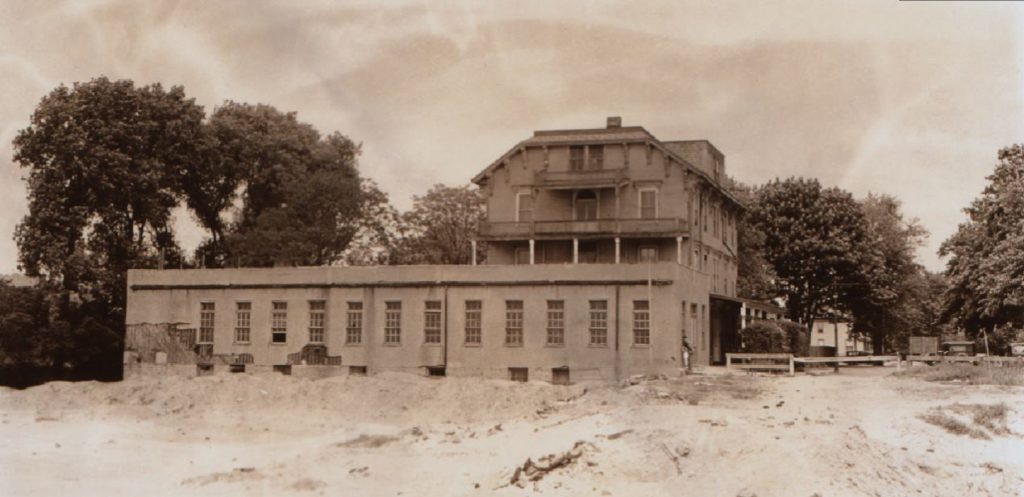
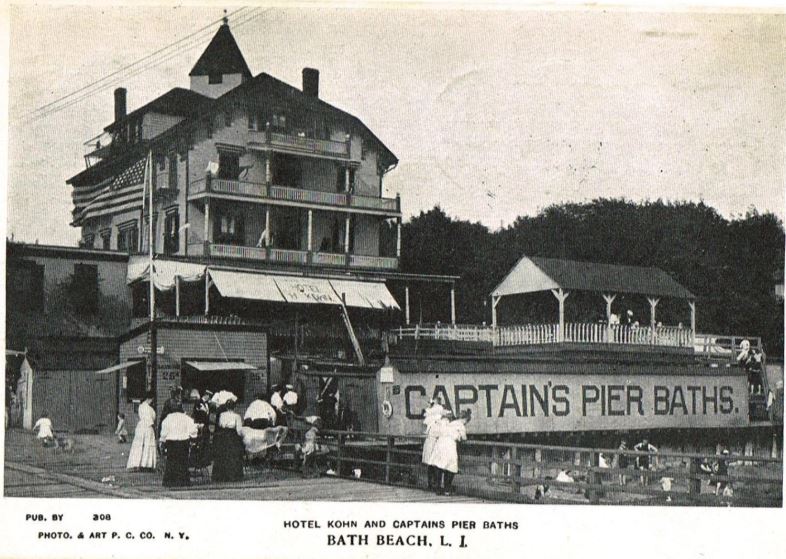

Fred Trump Comes to Bath Beach
In 1940, the year that the Belt Parkway opened, real estate developer Fred C. Trump made an all-cash offer to purchase the 55 acres of Bath Beach waterfront property from Joseph Day. At the time, this land was the largest undeveloped tract of land in Brooklyn. “I consider this great tract, fronting on the Belt Parkway, with its inspiring marine views, the finest home location I have ever purchased,” Trump told the press.
Like Furgueson, Trump was a Queens native who was good with his hands, which was a skill he used to take on small projects—like building his neighbor’s garage—in order to help with the family’s meager finances. And like Furgueson, he also had three boys and two girls. Only one son took an interest in real estate.
After graduating from Richmond Hill High School in 1922, Trump got his first job as a horse’s helper (his term, not mine), in which he helped drag lumber up hills to home sites when the horse-drawn wagons couldn’t make it in the snow. Trump later worked as a carpenter’s assistant while taking night courses in building construction at the YMCA. He built his first one-family house in Queens in 1924.
Although Trump originally planned to build 700 homes along his new waterfront property, World War II put a hold on his plans. With a four-year ban on local housing development, Trump donated 500 of his lots to the Civilian Defense Volunteer Office for use as Victory Gardens for the duration of the war.
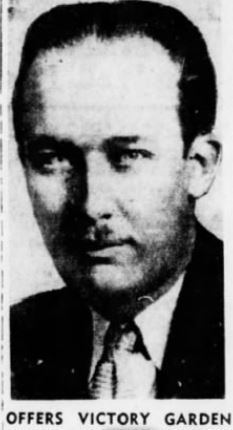
In 1945 the Federal Housing Administration allocated permits for 2,800 FHA housing units in Brooklyn, Queens, Nassau, and Suffolk counties to alleviate post-war housing shortages. Trump took advantage of this FHA-mortgage opportunity to construct several blocks of “cellar-less” two-family homes along 20th Avenue between Cropsey Avenue and the Belt Parkway.
Priced below $8,000 to meet Defense Housing Authority requirements, Trump’s two-family attached homes featured a 5-room apartment upstairs and a 3-room studio apartment downstairs that owners could rent to government workers for $40 to $50 a month.
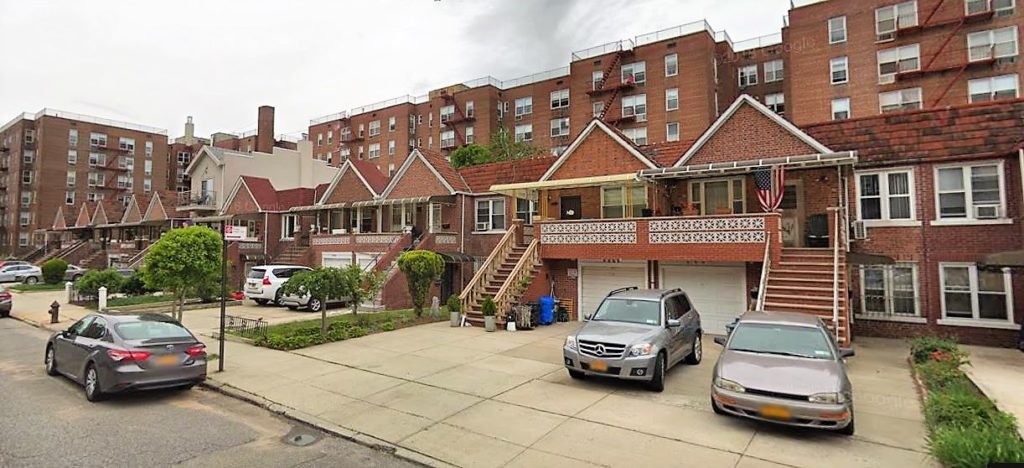
Shorehaven Garden Apartments: No Dogs Allowed
In 1947, Trump began work on his Shorehaven Garden Apartments, which was then one of the largest elevator apartment complexes in the city. Adjoining Bensonhurst Park on what had once been the grounds of the Bensonhurst Hotel, the 32-unit, 14-acre apartment complex boasted 4,843 rooms, accommodating 1,344 families, plus garage facilities for 700 cars and a large shopping center. Rentals averaged $80 a month; war veterans received preference among the thousands of applications for the affordable housing.
In 1948, while construction was still underway, the FHA released new regulations requiring mortgagors to certify under oath that they would not discriminate against tenants with children. Trump told the press, “Children have been welcome at Shorehaven from the start—but no dogs allowed.” (According to published reports that I found during my research, pets of all kind were banned from the Trump household.)
Luckily, there was never a fire at Shore Haven (that I know of) that required a life-saving canine hero.
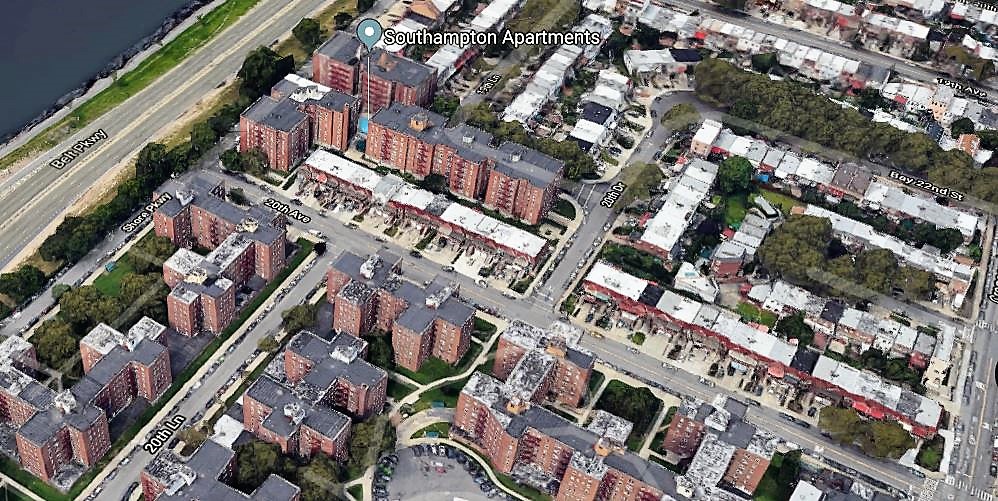
According to the Apartment Ratings website, dogs and cats are now allowed at Shore Haven Apartments, seen here in this aerial view of the Trump housing.
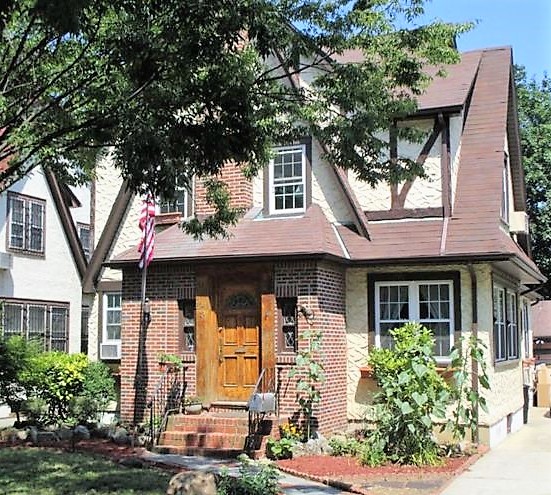
Incidentally, the Trump family home in Jamaica, Queens, is now being rented through Airbnb for close to $800 a night. No surprise, pets are banned from the home.



